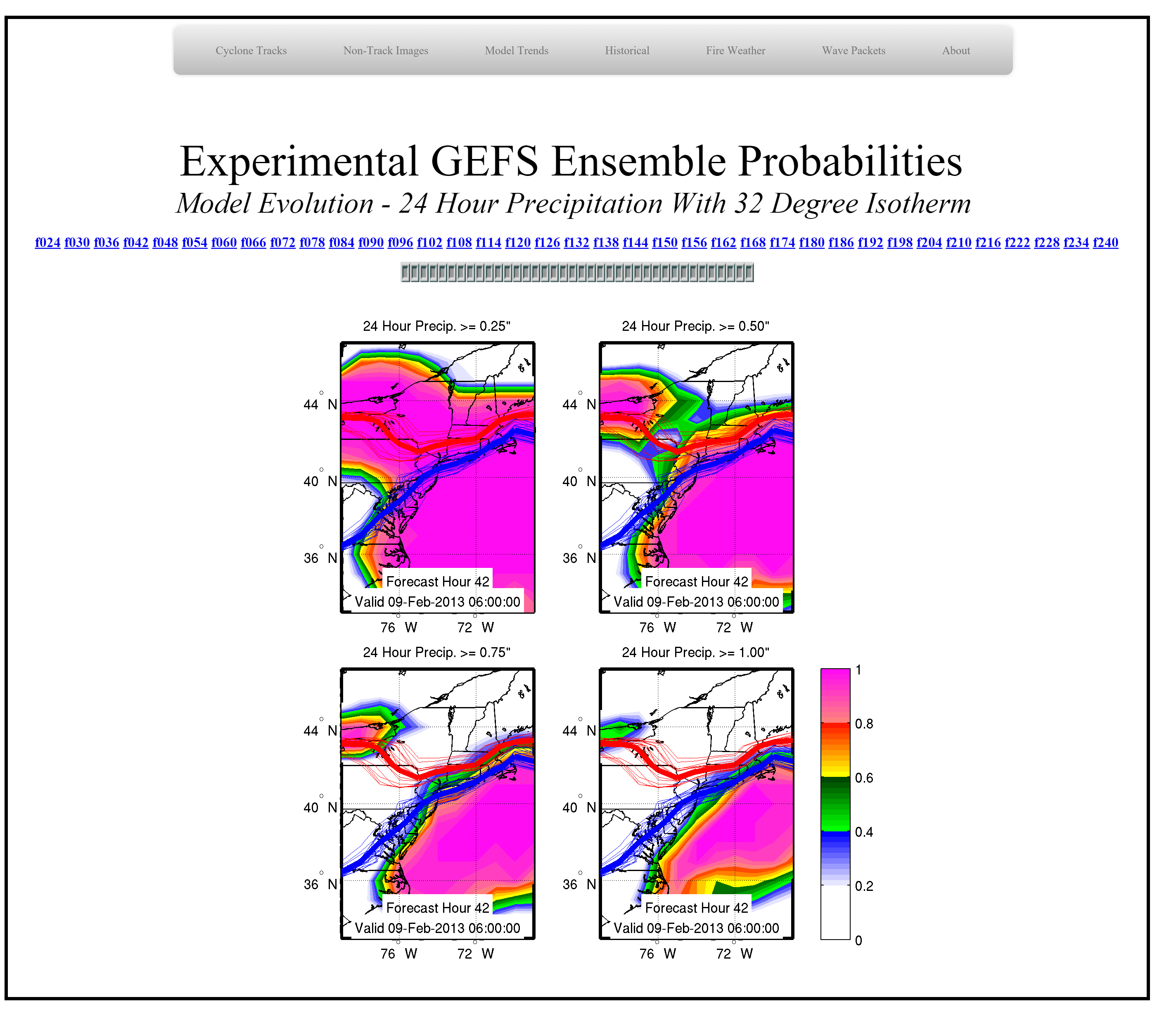
Okay, So What Am I Looking At? Additional Details - The Ensemble Used Additional Details - How Often Do the Images Update?
These "Model Evolution" graphics display the previous 24 hour maximum (in red) and minimum (in blue) 32/90 degree isotherm along with the 24 hour accumulated probability of precipitation (PoP) for different precipitation thresholds (0.25", 0.50", 0.75", and 1.00".) The image above shows the 42 hour forecast for the Global Ensemble Forecast System (GEFS) initialized on 12 UTC 07 Feb 2013. The highest probability for receiving greater than 1" of liquid equivalent precipitation in the preceeding 24 hours between 12 UTC Oct 08 - 06 UTC Oct 09 is in Southeastern New England. Locations in-between the red and blue lines indicate modeled maximum temperatures in the previous 24 hours above 32 degrees with minumum temperatures below 32 degrees. The thin lines are for each ensemble member, while the thick lines are for the ensemble mean. From this figure, northern New England was continuously below 32 degrees in the previous 24 hours, while southern Connecticut experienced both above and below 32 degree temperatures, and southeast Massachusetts remained above 32 degrees.
The forecast evolution of cyclone tracks can be advanced by mousing over the forecast hour in blue above the image. Model tendencies (i.e. trends) can be assessed by clicking on that forecast hour, as explained in the Model Trends How-to.
"24 Hour PoP with the 32/90 Isotherm" images are created for 4 unique ensembles: the Global Ensemble Forecast System (GEFS), the Canada Meteorological Center (CMC) Ensemble, the Fleet Numerical Meteorology and Oceanography Center (FNMOC), and the Short Range Ensemble Forecast System (SREF.)
These images are generated as soon as the ensemble data becomes available. The GEFS and SREF ensembles update four times a day from their 00 UTC, 06 UTC, 12 UTC and 18 UTC runs. The CMC, FNMOC and UKMET update twice a day from their 00 UTC and 12 UTC runs. Cyclone track data for the SREF, GEFS, UKMET, NMMOC and CMC are available about 5, 7, 7, 8, and 10 hours after model initialization, respectively.